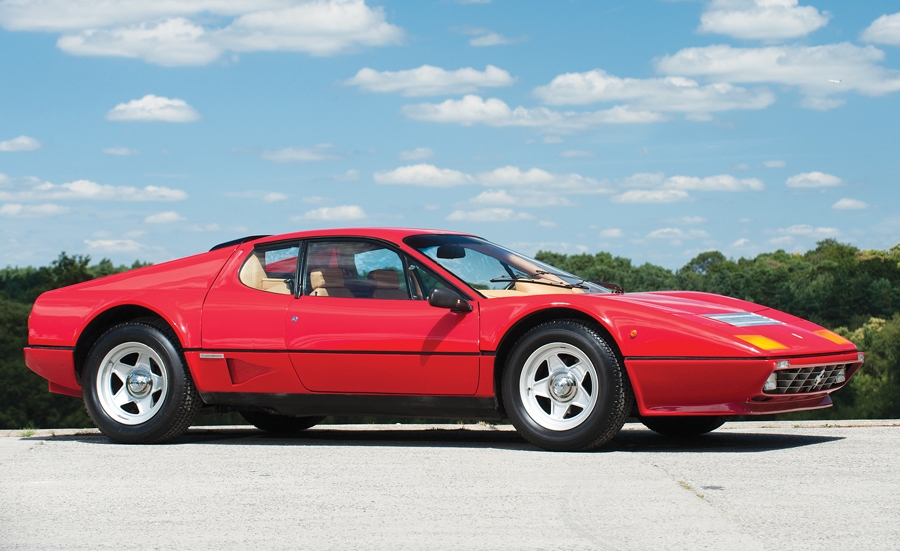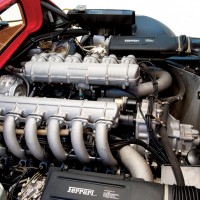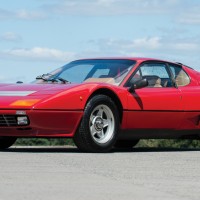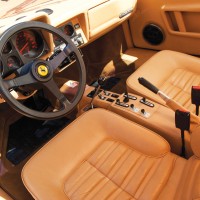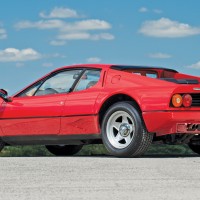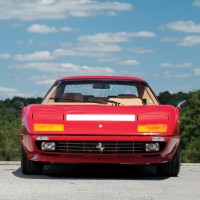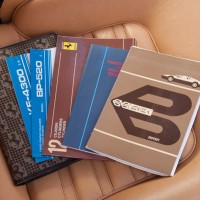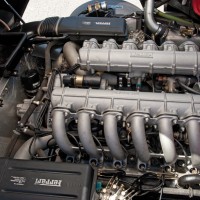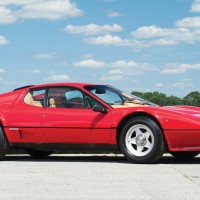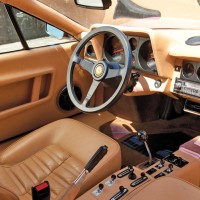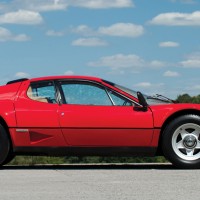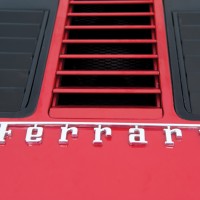SCM Analysis
Detailing
| Vehicle: | 1984 Ferrari 512 BBi Berlinetta Boxer |
| Number Produced: | 1,007 |
| Original List Price: | $62,500, plus an additional $10,000 for DOT/EPA compliance for cars imported into the United States |
| Tune Up Cost: | $8,000 and up for an engine-out service with belts |
| Distributor Caps: | $500 |
| Chassis Number Location: | On frame tube in engine bay |
| Engine Number Location: | On top of block |
| Club Info: | Ferrari Club of America |
| Website: | http://www.ferrariclubofamerica.org |
| Alternatives: | Lamborghini Countach, Maserati Bora, DeTomaso Pantera |
| Investment Grade: | B |
This car, Lot 168, sold for $317,294, including buyer’s premium, at RM Auctions’ London sale on September 8, 2014.
Enzo Ferrari was well aware of the dangers of putting high-performance cars in the hands of low-performance drivers. Some of the most talented drivers to get behind a steering wheel lost their lives in Ferrari race cars, and the thought of selling his automobiles to just anyone who could write a big check was a source of personal conflict.
In the case of race cars, Enzo Ferrari was known to pick and choose who bought his cars, but with street cars the chore was not so easy.
The dilemma was particularly vexing as race cars evolved from a front- engine configuration to more nimble mid-engine designs. Road-car customers were requesting production versions of the exotic, potent designs, and Ferrari’s competitors were starting to offer them.
In an episode that seems almost unbelievable in light of the performance of Ferrari’s current production, Enzo Ferrari protested that mid-engine cars were too fast and too dangerous to sell to the general public, so he initially refused to build a mid-engine street car. His manufacturing partners and marketing department finally convinced him that such an offering was needed. Enzo relented under the condition that the mid-engine offering be powered by a 6-cylinder Dino engine rather than a traditional Ferrari 12-cylinder engine.
The Dino series turned out to be wildly successful, and it opened the door for the 12-cylinder Berlinetta Boxer series. The Berlinetta Boxer represented three firsts for Ferrari:
1. It was the first time Enzo Ferrari allowed the use of a 12-cylinder engine in a mid-engine production car.
2. It was the first time Ferrari used a Flat-12-cylinder engine in a production car.
3. And it was the first time Ferrari used rubber timing belts on a production engine.
A flat-out amazing engine
History will have to evolve past our current infatuation with Ferrari’s V12 engines before the importance of their Flat 12-cylinder engine is fully appreciated.
The Flat 12 is also known as a 180-degree V, and is nicknamed “Boxer” for the way its pistons box against each other. It is not a unique design, as Porsche has built a dynasty on the concept, but it represents a period in Ferrari’s competition history that rivals — if not surpasses — the 250 period, which is popularly regarded as Ferrari’s Golden Age.
The 3-liter Flat 12 was introduced during the 1970 Formula One season in Ferrari’s 312 B. To call the engine dominant would be an understatement. Variations would power Niki Lauda to 1975 and 1977 World Championships. Jody Scheckter extended the glory with a 1979 World Championship.
On the sports-car side, Ferrari put a de-tuned version of their Flat 12 in a 312 chassis and won every race they entered in 1972 — and clinched the 1972 World Sports Car Championship. Gilles Villeneuve, Carlos Pace, Brian Redman, Mario Andretti, Jacky Ickx and Niki Lauda are just a few of the Ferrari drivers who drove a Flat-12 Ferrari.
The Boxer street engine was introduced in a 344-hp, 4.4-liter configuration for use in the 365 GTB4 Berlinetta Boxer. It was substantially different from the famous race engine — but quite exotic and sufficiently powerful.
The 365 quickly morphed into the 360-hp carbureted 5-liter engine found in the 512 BB. Next, fuel injection was added for a 340-hp, 5-liter unit to power the 512 BBi. The concept was later updated with four valve heads and 390 horsepower for use in the Testarossa before evolving into the 428-hp 512TR powerplant. The final version was the 440-hp F512 M unit.
Boxers finally on the rise
The last time I wrote about Boxers, an online posting requested Boxer fans to send me dead fish. A feeling persisted among Boxer enthusiasts that Boxer values are too low, and they will be the next to take off. I wasn’t in line with their views, so revenge was proposed. As just about everything else wearing a Prancing Horse has exploded in value, the faithful are finally being rewarded for their devotion. After years of low demand and stagnant values, Boxers are on a run.
Fuel-injected Boxers languished in the $100,000 range before one sold for $170,000 at a 2013 Monterey auction. This year at Monterey, a 715-kilometer BBi brought an astounding $473,000, and an average example remarkably sold at just over $300,000. A $300,000 sale nets the owner in the mid-$200,000s, which is about what a private sale of a premium example netted last month.
RM’s Boxer 49533 was a well-documented, low-mileage example. It was reported to be in perfect condition with all the accessories. Nothing was mentioned about the very expensive major service or the condition of the elusive TRX tires, but at this purchase price they are incidental expenses.
Spending $317,000 is a reach for an 11,000-mile BBi, but this was the car to stretch for. It was a good result for both sides. The vendor got more that he could have expected six months ago, and the buyer has a great car at a price that may seem cheap in a few months. ♦
(Introductory description courtesy of RM Auctions.)
